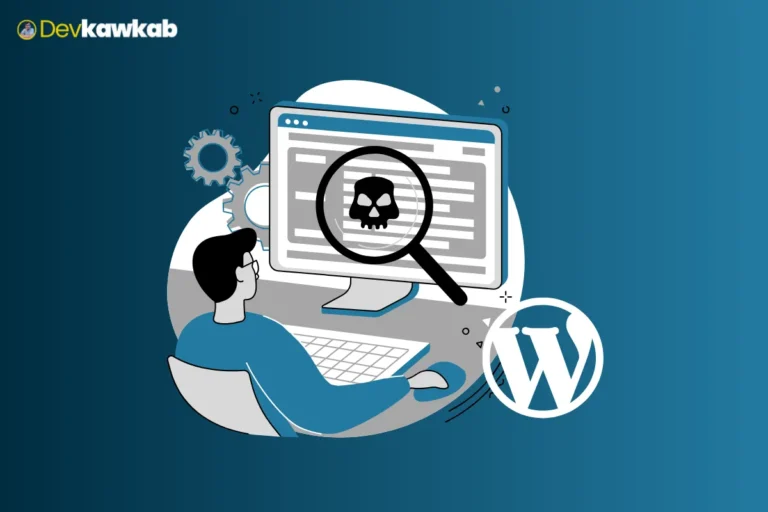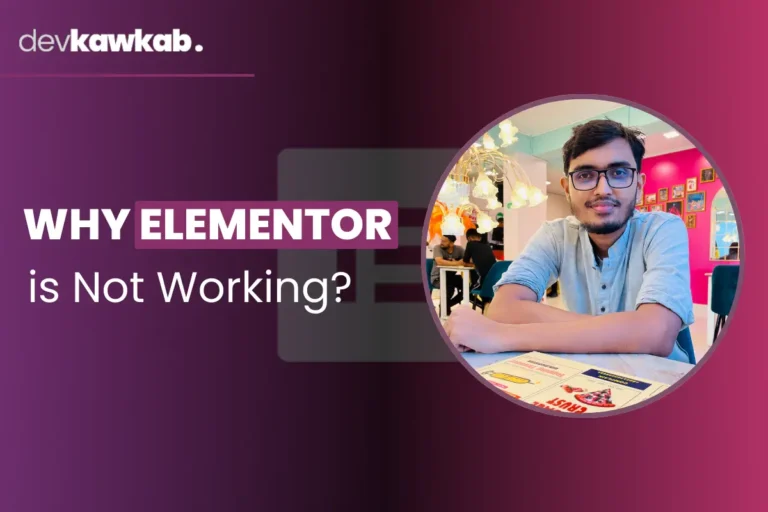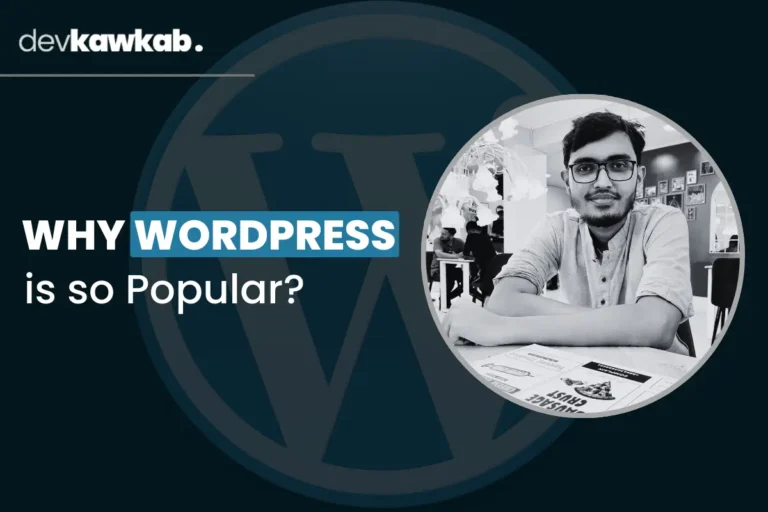A slow WordPress website does more than frustrate visitors. It reduces traffic, lowers sales, and harms search rankings. Google now treats site speed and Core Web Vitals as direct ranking factors. At the same time, most users leave if a page takes more than three seconds to load.
That is why AI-powered speed optimization has become a must for bloggers, eCommerce owners, and enterprises. Artificial intelligence can handle caching, compress images, manage scripts, and predict user actions in real time. The result is faster load times, stronger SEO, and better conversions.
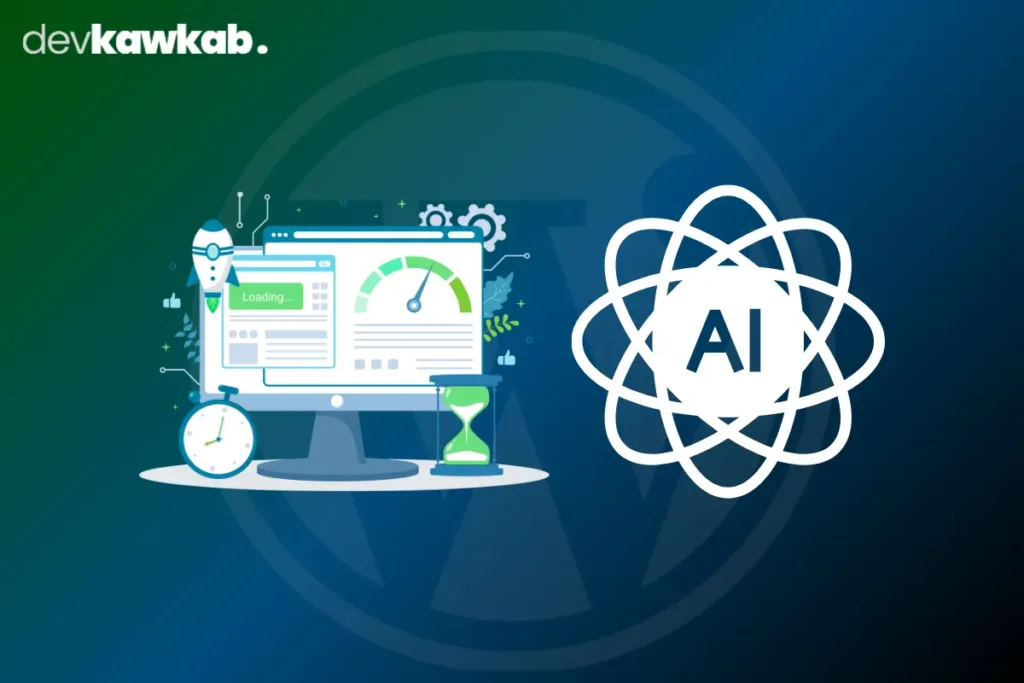
In this guide, you will find a complete roadmap. It starts with beginner-friendly plugins, then moves to advanced AI techniques. By the end, you will know which tools to use, what mistakes to avoid, and how to prepare for the future of WordPress performance.
Protect your WordPress site 24/7 with an AI Security Monitoring Plugin that blocks attacks before damage.
What Is WordPress Site Speed Optimization?
Site speed optimization means making your WordPress website load quickly across all devices. It is not only a technical fix but also a way to improve both user experience and search visibility.
Several factors affect speed:
- Hosting quality: Shared servers are slower than managed or cloud hosting.
- Themes and plugins: Heavy themes or poorly coded plugins reduce performance.
- Images and media: Large, uncompressed files increase page weight.
- Scripts and CSS: Extra requests or unused code delay rendering.
- Database: A cluttered database slows query response.
In the past, optimization required manual work such as caching, minifying, or adjusting code. Now AI makes the process adaptive and predictive. It studies traffic patterns, balances resources, and applies fixes automatically.
Why Speed Matters: SEO, Rankings & Conversions?
Google has made it clear: speed is part of SEO. Core Web Vitals – Largest Contentful Paint (LCP), Interaction to Next Paint (INP), and Cumulative Layout Shift (CLS) – directly affect rankings.
User behavior proves the same point. Google research shows that 53% of visitors leave a site if it takes longer than three seconds to load. That means more than half of your traffic may disappear before viewing your content.
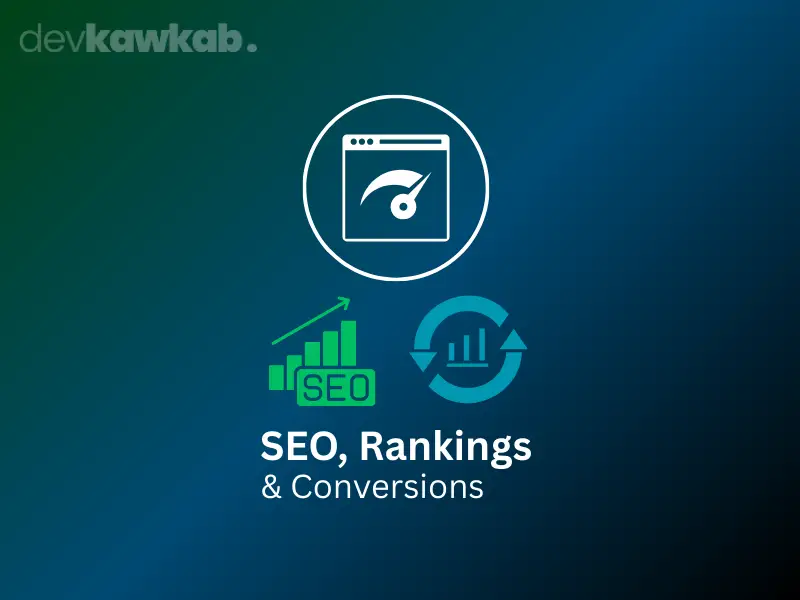
Speed also drives conversions. A report by Akamai found that just one extra second of delay can reduce conversions by 7%. Amazon even reported that every additional 100 milliseconds of load time cut their revenue by 1%. If a company that large can lose millions from small delays, smaller businesses are at even greater risk.
Real-World Business Impact
Think about an online store that makes $50,000 in sales per day. If the site slows down by just one second, the yearly loss could exceed $1 million. That shows site speed is not a small technical detail. It is a core business growth factor.
Bounce Rates and User Trust
Slow sites do not only lose traffic. They also lose credibility. Studies reveal that even a two-second delay can double the bounce rate. Visitors often see slow websites as unreliable. This lowers trust and damages long-term customer loyalty.
Why AI Creates a Competitive Edge?
Traditional optimization depends on manual steps like compressing images, setting up caching, and minifying code. These methods work, but they remain static. AI changes the picture.
Instead of waiting for problems to appear, AI monitors site behavior in real time. It predicts the visitor’s next move and adjusts performance instantly. For example, it can decide which content to preload, reallocate resources, and even fix Core Web Vital issues automatically.
This turns speed optimization into a continuous process rather than a one-time task. The result is better rankings, fewer bounces, and a measurable increase in conversions.
How AI Transforms WordPress Speed Optimization?
AI is more than just caching or compressing. It brings real-time adaptability and smarter decisions. Unlike fixed rules, AI tools learn from traffic behavior and respond dynamically.
Here are the key areas where AI reshapes performance.
Predictive Caching: Serving What Visitors Might See Next
Standard caching saves content so returning visitors load faster. AI takes this further. It studies traffic patterns and predicts the next page a visitor may click. That page is then preloaded in advance.
The result is near-instant navigation, which is especially useful for eCommerce stores or large content sites.
Intelligent Image Optimization: Sharp Images, Small Files
Images are a common reason for slow sites. AI-powered tools do more than reduce size. They choose the best format (WebP or AVIF) and resize based on the visitor’s device and connection. A user on a slow mobile network gets a smaller version, while desktop users enjoy full quality.
Some AI tools like Optimole even enhance low-resolution images, making them sharper without increasing file size. This ensures fast load times without losing visual appeal.
Dynamic Code Optimization: Clean, Fast, Lean
Unused scripts slow down loading. Instead of removing them manually, AI can detect, minify, or delay scripts in real time. For example, it may hold back a chat widget until the page is already interactive. This makes the first load faster without breaking site functions.
Adaptive CDN Delivery: Smarter, Not Just Closer
A CDN normally serves content from the closest server. With AI, the process becomes smarter. It routes traffic based on live network conditions, server load, and performance data. Visitors always get content from the fastest location at that moment.
Machine-Learning Load Balancing: Preventing Slowdowns
Traffic spikes can overwhelm traditional servers. AI-driven load balancing tracks usage, predicts surges, and spreads requests across servers before a slowdown happens. Some hosting platforms even add or remove servers automatically based on AI forecasts.
Why AI Beats Static Settings?
Static optimization is like tuning a car once and driving it in every condition. But roads change, and so does web traffic. AI adapts on the spot.
During a sale, a sudden visitor spike may appear. AI can shift resources instantly. If a script slows the site, AI will detect and optimize it. This makes WordPress optimization proactive, not reactive. It is faster, more efficient, and requires far less manual effort.
Beginner’s Guide: Quick A Solutions for Faster WordPress
If you are new to optimization, AI plugins are the easiest way to speed up a WordPress site. These tools manage caching, image compression, and script handling without requiring technical knowledge.
How to Get Started? Step by Step?
First, select a reliable AI-powered plugin such as NitroPack or FlyingPress with AI features. These plugins can be set up in just a few minutes.
After installation, you will be asked to connect your WordPress site to the plugin’s optimization dashboard. For example, NitroPack requires a simple account connection using email or an API key.
Next, choose an optimization mode. NitroPack offers several levels, and the most aggressive option, often called “Ludicrous Mode”, prioritizes critical assets like HTML and CSS first, while less important scripts load later.
Key First-Time Settings to Tweak
You do not need advanced knowledge to make a difference. A few toggles can improve speed dramatically:
- Enable lazy loading for images and videos so they only load when visible to the visitor.
- Turn on automatic image compression and WebP/AVIF conversion to reduce file size without losing quality.
- Activate AI-enhanced caching so that pages load instantly for repeat visitors.
- Use the built-in CDN to serve content from the nearest server to each user.
With these settings, many beginners see 2–5 seconds faster load times within the first hour of setup.
Why These Settings Work?
These optimizations save time because AI tools automate tasks that normally require multiple plugins or manual coding. Lazy loading reduces the initial page weight.
Image compression cuts file sizes. Caching speeds up repeat visits. A CDN ensures fast global delivery.
Together, these improvements create a site that feels lighter, smoother, and more responsive. Even without coding skills, beginners can achieve performance that competes with professional setups.
Advanced AI Tactics for WordPress Speed
For developers and growth-focused site owners, AI unlocks powerful, precision-driven performance gains.
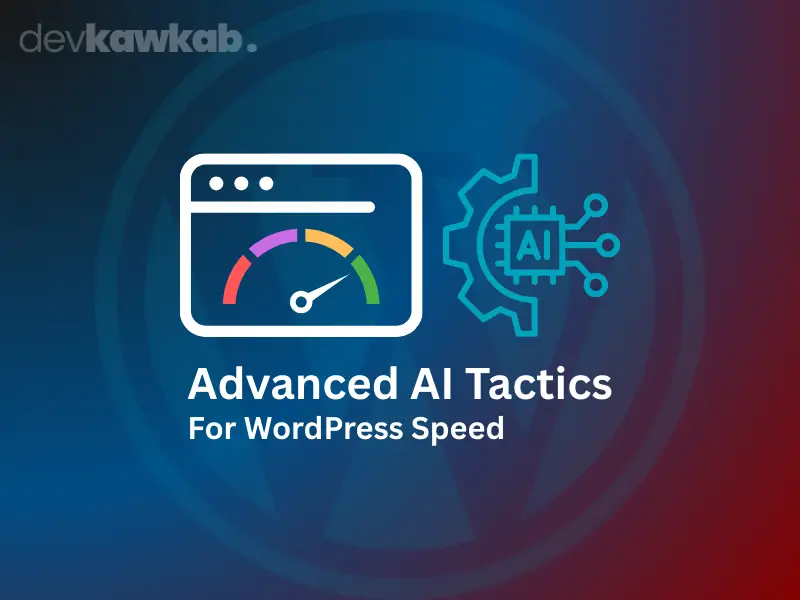
Let’s explore the deep-lever tactics that go beyond plugin defaults.
AI-Based Anomaly Detection
AI can track unusual activity such as slow scripts, inefficient database queries, or heavy third-party requests. When performance drops, the system alerts you instantly.
Some managed hosting providers, like WP Engine, already use AI insights to detect irregularities and deploy fixes automatically. This means you can fix issues before visitors even notice them.
Predictive Database Optimization
Large WordPress sites, especially WooCommerce stores, often suffer from bloated or poorly structured databases. An AI database optimizer learns how queries are made and creates custom indexes. It also schedules cleanups during low-traffic hours and keeps backups before making changes.
The result is a faster and leaner database without manual work.
AI-Enhanced CDN and Edge Delivery
AI-driven CDNs do more than serve content from the nearest server. They use real-time analytics to pick the fastest delivery route, auto-adjust caching rules, and detect unusual traffic spikes.
This ensures a smooth experience for users worldwide, even during sudden surges in demand.
Custom ML Models for Caching Strategy
Advanced users can create custom ML models trained on site traffic data. These models predict which pages or assets users will likely request next. With this data, the system can warm caches in advance, preload content, and prioritize critical assets.
For high-traffic sites, this proactive method cuts latency and improves user satisfaction.
Who Benefits Most?
These advanced tactics are most effective for:
- Large WooCommerce stores with constant product and checkout activity.
- Membership platforms where personalization and frequent updates are common.
- High-traffic blogs or news sites that face unpredictable spikes in visitors.
AI ensures these sites scale smoothly and remain fast under pressure.
Summary Table: AI Tactic Overview
| Tactic | What It Does | Ideal Use Case |
| Anomaly Detection | Alerts you to script/database performance spikes | SaaS platforms, fast-changing sites |
| Predictive DB Optimization | Learns query patterns, auto-optimizes indexes | eCommerce, high-entry-count sites |
| AI-Enhanced CDN Edge Delivery | Routes traffic using real-time analytics | Global audiences, fluctuating traffic |
| Custom ML-Based Caching | Preloads content based on traffic behavior models | News networks, membership portals |
By applying these tactics, advanced users can build sites that adapt, scale, and perform proactively. AI removes guesswork and gives your visitors a consistently fast experience.
Tools & Plugins: Best AI Solutions for WordPress Speed
The right AI-powered tools can save hours of manual work. These plugins and services manage caching, image optimization, CDN routing, and predictive preloading with little effort.
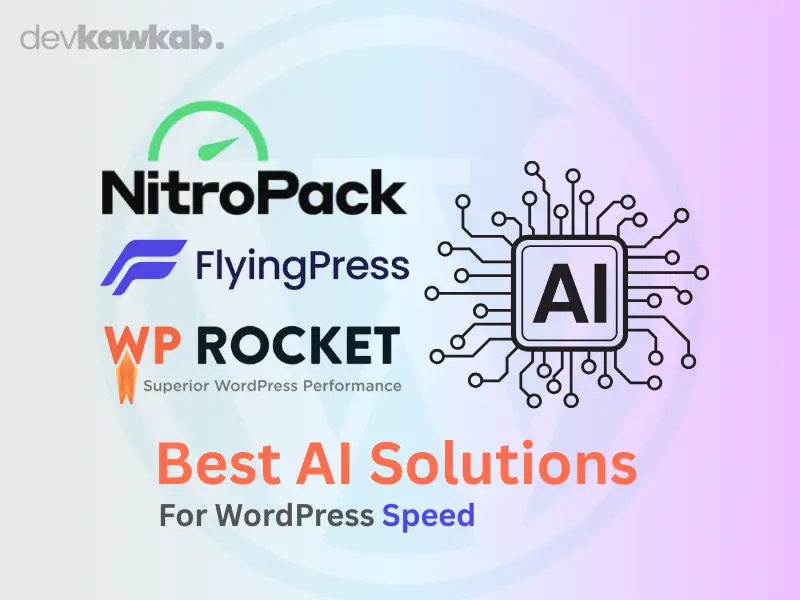
Below, I’ve organized them into categories so you know which option fits your needs.
AI WordPress Plugins
These beginner-friendly plugins bundle caching, compression, and script management in one place.
- NitroPack: A complete solution that includes caching, CSS/JS minification, lazy loading, and an AI-enhanced CDN. It is ideal if you want automation with very little setup.
- FlyingPress: Offers speed-focused features like predictive preloading, delayed JavaScript, and AI caching. Perfect for users who want both control and automation.
- WP Rocket (AI add-ons): A simple and effective option for beginners. It creates smart rules for scripts, defers non-critical assets, and improves Core Web Vitals with minimal setup.
AI-Powered CDNs
A Content Delivery Network (CDN) powered by AI distributes your site globally and serves it from the closest server to each visitor.
- Cloudflare Zaraz – Offloads third-party scripts and uses AI optimization for faster delivery. Works best for security + performance.
- Bunny.net SmartEdge – Uses adaptive routing and AI caching rules. Ideal for growing sites that need scalability without high costs.
- Akamai AI Delivery – Enterprise-grade CDN with predictive caching and traffic intelligence. Suitable for large businesses with heavy traffic.
AI Image Optimization
Images are often the heaviest part of a WordPress site. AI tools resize, compress, and deliver them in the right format automatically.
- ShortPixel Adaptive AI – Automatically resizes and converts images to the best format per device (WebP, AVIF, etc.).
- Imagify AI – Handles bulk AI compression and is great for large WordPress sites or WooCommerce stores.
Quick Comparison Table
| Tool / Plugin | Best For | Key Features | Pricing |
| NitroPack | All-in-one optimization | Caching, compression, AI lazy loading | Starts $21/mo |
| WP Rocket (AI add-ons) | Beginners | Smart caching, Core Web Vitals boost | $59/yr |
| FlyingPress | Performance-focused users | Predictive preloading, AI script control | $60/yr |
| Cloudflare Zaraz AI | Global CDN & security | AI routing, script offloading, bot control | Free + Pro plans |
| Bunny.net SmartEdge | Scalable CDN | Adaptive routing, AI caching rules | Pay-as-you-go |
| Akamai AI Delivery | Enterprise websites | Predictive caching, enterprise routing | Custom pricing |
| ShortPixel Adaptive AI | Image optimization | Smart resizing & format conversion | Free + premium |
| Imagify AI | Bulk image compression | AI-powered bulk optimization | Free + premium |
Pro Tip: Always test your site after enabling these tools. Use Google PageSpeed Insights or GTmetrix to see if the improvements work well with your theme, plugins, and hosting. Even with AI, some settings may need small adjustments for best results.
Common Mistakes in AI-Powered Optimization
Even with powerful AI tools, your site can still slow down or break if you make common mistakes.
Let’s look at the errors site owners often make and how to avoid them.
1. Leaning on Automation Without Checking Results
AI can do the heavy work, but it still needs monitoring. Many people install a plugin, leave it running, and never check the results. This is risky.
Always run tests with Google PageSpeed Insights or GTmetrix after enabling AI features. Track metrics like LCP, INP, and CLS. Without testing, you may not notice if AI settings are harming layout or speed.
2. Overlooking Mobile Optimization
In 2025, more than 60% of global traffic comes from mobile devices. That means mobile speed should be your top priority.
Some optimization plugins do not fine-tune mobile by default. If you forget to enable mobile-specific settings like responsive images, mobile caching, or touch-friendly UI, your site will feel slow and clunky for most users.
3. Using Too Many AI Plugins That Clash
Using multiple AI plugins that overlap can cause conflicts and even slow your site further. For example, one plugin might duplicate caching rules while another overrides image optimization.
Pick a primary AI tool such as NitroPack, FlyingPress, or WP Rocket AI add-ons, and let it handle the bulk of your optimization.
4. Ignoring Core Web Vitals After Changes
AI can change how scripts, images, and assets load. If you don’t monitor results, you may miss hidden issues.
Always review Core Web Vitals after applying changes. If metrics like LCP or CLS drop below recommended levels, tweak settings before they harm SEO.
5. Skipping Secure Development Practices with AI
AI tools that auto-generate CSS, JavaScript, or backend code can sometimes introduce vulnerabilities. Never trust them blindly.
Review changes and test functionality and security after enabling new AI features.
6. Forgetting to Update Plugins and Clear Cache
Outdated plugins conflict with AI tools. New WordPress versions also add performance updates, so skipping updates can slow your site or break features.
Always keep plugins updated and clear cache after updates. A stale cache may serve old files, making debugging harder.
7. Blaming the AI When It’s Really Your Hosting
AI plugins can’t fix a slow server. If your hosting plan lacks SSD storage, modern PHP versions, or HTTP/2 support, your site will remain sluggish.
Check your hosting response times. If servers are slow, move to reliable managed hosting before expecting AI tools to deliver results.
8. Over-Optimization That Hurts Functionality
Sometimes users enable every optimization setting possible. This can strip away too much CSS or delay important JavaScript, breaking layouts or forms.
Always test checkout pages, forms, and dynamic content after making changes.
9. Not Having a Rollback Plan
Even AI tools fail or misconfigure. Always have a strategy to revert to a previous plugin version or restore a backup if things go sideways.
Use staging environments for testing major AI setups before pushing changes live. That ensures outages or errors never reach your visitors.
Myths About AI and Site Speed Optimization
When AI enters the speed optimization scene, myths often follow.
Let’s dig deeper and debunk four common misunderstandings – without repeating previous lines – and rely on real insights.
Myth 1: “AI will fix everything automatically.”
Reality: AI handles many optimization tasks, but it doesn’t cover every detail.
AI tools can improve caching, compress images, and manage assets – but they can’t substitute for clean hosting, updated themes, or conflict-free plugins.
Performance still depends on infrastructure. This mirrors the SEO world, where AI shortcuts work – but human strategy remains a must.
In short: AI accelerates progress – not replaces the groundwork.
Myth 2: “AI replaces human decision-making.”
Reality: AI is a powerful assistant—but creativity, oversight, and strategy require human input.
AI models excel at automation and data processing, but when it comes to context, tone, and site-specific goals, humans still lead.
This reflects broader AI realities: tools augment talent rather than replace it.
Your decisions remain the compass.
Myth 3: “More AI tools = faster performance.”
Reality: Loading up on AI plugins can degrade speed instead of boosting it.
Every plugin adds overhead. Even well-optimized AI tools consume resources – especially if they conflict or load redundant scripts.
For example, poorly managed WordPress plugins, rather than their quantity, often cause slowdowns.
Choose a lean, effective setup instead of stacking tools.
Myth 4: “AI is a magic button.”
Reality: AI isn’t mystical – it works through predictable algorithms and requires proper setup to deliver results.
Think of AI as smart automation, not wizardry. Just like SEO strategies rest on fundamentals, AI needs configuration and testing. It’s not instant perfection – its advanced assistance working within your site’s architecture.
Don’t expect flawless fixes by default – expect accelerated improvement.
Case Studies & Real Examples
Real-world results speak louder than theory. Let’s look at how AI-powered tools have improved speed and boosted business outcomes across different types of WordPress sites.
WooCommerce Store: NitroPack + AI CDN Boosts Speed and Sales
A large WooCommerce store faced slow performance and poor mobile scores, with load times over seven seconds. After implementing NitroPack along with an AI-enhanced CDN, the load time dropped to 2.1 seconds.
This faster experience directly increased sales. The store recorded a 38% jump in conversions. The lesson here is clear: visitors buy more when pages load quickly.
Content Blog: From Image Overload to Agile Performance
Another blog suffered from image-heavy content. Pages loaded slowly, which hurt both SEO and reader engagement.
By integrating ShortPixel Adaptive AI for image compression and FlyingPress for predictive preloading, the blog reduced load times to 1.9 seconds.
As a result, organic traffic increased by 25%. Search engines rewarded the faster pages, and readers stayed longer, leading to higher retention.
NitroPack’s Broader Impact: Engagement and Conversions
NitroPack has shared several insights on how speed impacts user engagement across industries:
- For travel websites, every 0.1 second improvement in speed raised conversions by 10.1%.
- For eCommerce sites, conversions grew by 8.4%, and the average order value increased by 9.2%.
- In the luxury market, conversions rose by 3.6%, and product page visits leading to cart additions increased by 40.1%.
One strong example comes from OfficeRnD, which used NitroPack to fix large image issues and slow script execution. Within two months, their overall conversions went up by 10%, while product page conversions improved by 12.5%. They also passed Core Web Vitals comfortably after optimization.
NitroPack has collected more than 20 case studies across well-known brands, proving that site speed consistently translates into measurable growth.
Industry Insight: Amazon’s Famous Data
Amazon is often cited as the benchmark for site speed’s impact. The company revealed that every 100ms of delay reduced sales by 1%. Even the largest eCommerce platform cannot afford slow performance. This insight underlines how critical speed is for businesses of all sizes.
Summary of Results
| Site Type | Before AI Load Time | After AI Load Time | Outcome |
| WooCommerce Store | ~7.2 sec | ~2.1 sec | +38% conversions |
| Image-Heavy Blog | Slow, choppy | ~1.9 sec | +25% organic traffic |
| Multiple Industries | Varies | Improved by 0.1 s | 8–10% lift in conversions / revenue / engagement |
What These Examples Show
These case studies prove two points:
- Speed equals conversions. Every second, or even fraction of a second, impacts engagement, sales, and retention.
- AI delivers results. From caching and CDN optimization to smart image handling, AI tools turn technical improvements into real business growth.
Best Practices for AI-Driven WordPress Speed
AI tools can transform WordPress performance, but to keep results consistent you need the right practices.
Let’s break down the proven steps that work best.
Start with a Lightweight Foundation
Even the smartest AI plugin cannot fix a heavy, bloated theme. Begin with a lightweight framework like Astra, GeneratePress, or Hello Elementor.
A clean foundation ensures faster initial loads and allows AI tools to be more effective.
Monitor with AI-Aware Dashboards
Tracking site health is critical. Tools like New Relic and Datadog provide real-time visibility into WordPress performance.
- New Relic: Offers deep insights at the PHP level. You can track plugin execution, database queries, memory usage, and receive alerts when performance drops.
- Datadog: Known for infrastructure and cloud observability. It provides dashboards, integrations, and monitoring of servers, databases, and application layers.
Choose New Relic if you want application-level insights. Pick Datadog if infrastructure monitoring is your main need.
Keep Everything Updated
AI tools rely on compatibility. If your WordPress core, plugins, or hosting are outdated, optimizations will break.
Updating ensures:
- AI rules stay effective.
- Plugin conflicts are minimized.
- You remain compatible with performance-focused PHP versions and server updates.
Skipping updates can lead to crashes, slower sites, or failed Core Web Vitals.
Combine AI with Smart Manual Tweaks
AI can automate most processes, but manual fine-tuning still adds value.
- Remove unused plugins or themes that create bloat.
- Limit HTTP requests by reducing unnecessary fonts or scripts.
- Use manual cleanup tools to unload unused code from pages.
A blend of AI automation and manual care keeps your site lean and optimized.
Build a Reliable Workflow
Performance is not a one-time project. Create a repeatable workflow to maintain results:
- Baseline test with PageSpeed Insights, GTmetrix, or WebPageTest before adding AI.
- Enable AI plugins for caching, image optimization, and script control.
- Re-test performance to confirm improvements and detect new bottlenecks.
- Monitor continuously with dashboards for early warnings.
- Adjust manually when AI optimizations conflict with site functions.
This system ensures your site stays fast and reliable over time.
Summary of Best Practices
| Principle | Why It Matters |
| Lightweight Theme | Reduces bloat, maximizes AI effectiveness |
| AI + Observability Tools | Helps you spot and fix hidden slowdowns |
| Regular Updates | Maintains compatibility and security |
| AI + Manual Clean-up | Balances automation with precision |
| Performance Workflow | Ensures ongoing speed through repeatable steps |
Future of AI in WordPress Speed Optimization
The next five years will bring big changes in how WordPress sites are optimized. AI will make speed improvements more predictive, adaptive, and automatic than ever before.
AI-Driven Forecasts for Core Web Vitals
AI will soon be able to predict Core Web Vitals scores before you make a change. It will act like a performance forecast, showing whether LCP, INP, or CLS will improve or decline after an update. This helps site owners fix issues before users experience slowdowns.
Generative AI Page Rendering
Generative AI will allow websites to pre-render pages even before a visitor clicks. Instead of waiting for requests, the system will prepare snippets or complete pages in advance.
This makes the content load instantly when the user interacts. For dynamic or personalized pages, this approach will be far more effective than static caching.
Predictive UX Personalization
AI personalization is evolving – sites will begin loading specific elements based on user intent. For instance, if AI senses the user is intent on reading a product review or buying something, it will prioritize preloading those sections.
This results in lightning-fast, custom experiences that feel intuitive and almost anticipates user needs.
AI-Augmented Hosting That Self-Optimizes
The next generation of hosting will use AI to adjust server performance in real time. Servers will add resources like CPU and memory automatically before a traffic spike hits.
AI-driven load predictions will also spin up edge servers globally when needed. This ensures a stable and fast experience even during unexpected surges.
Why Early Adopters Will Win
Businesses that use these technologies early will have a major advantage in search rankings and user experience.
Faster pages mean higher SEO scores, smoother browsing, and more conversions. Early adopters will be building an infrastructure that is future-proof, scalable, and designed for growth.
Frequently Asked Questions
How can AI improve WordPress site speed instantly?
AI speeds up a site by compressing images, preloading pages, managing scripts, and optimizing caching automatically. These steps reduce load time without manual work.
What is the best AI plugin for WordPress performance?
NitroPack is a strong all-in-one option. However, FlyingPress and WP Rocket AI add-ons are also excellent alternatives depending on your needs.
Does AI help with mobile optimization?
Yes. AI automatically adjusts image sizes, delays heavy scripts, and improves Core Web Vitals for mobile visitors.
Can AI replace caching plugins?
AI-powered tools now act as next-generation caching solutions. Traditional caching is still useful, but AI plugins often perform better because they adapt in real time.
Is AI safe for WooCommerce stores?
Yes. AI works well with dynamic websites. It supports predictive caching, cart page optimization, and checkout speed improvements.
How does AI affect Core Web Vitals?
AI improves Core Web Vitals by optimizing rendering, preloading content, compressing media, and using adaptive delivery systems.
Conclusion
WordPress site speed optimization with AI is no longer optional. It is essential. A fast site improves Google rankings, builds trust, and increases conversions.
The best approach is to start simple with AI-powered plugins. As your site grows, you can add advanced AI tactics, custom models, and predictive hosting.
Always remember to test, monitor, and refine after enabling AI features. Speed optimization is not a one-time task. It is an ongoing process where AI becomes your strongest ally. If you want your WordPress site to stay fast, scalable, and future-proof, AI should be at the heart of your optimization strategy today.
